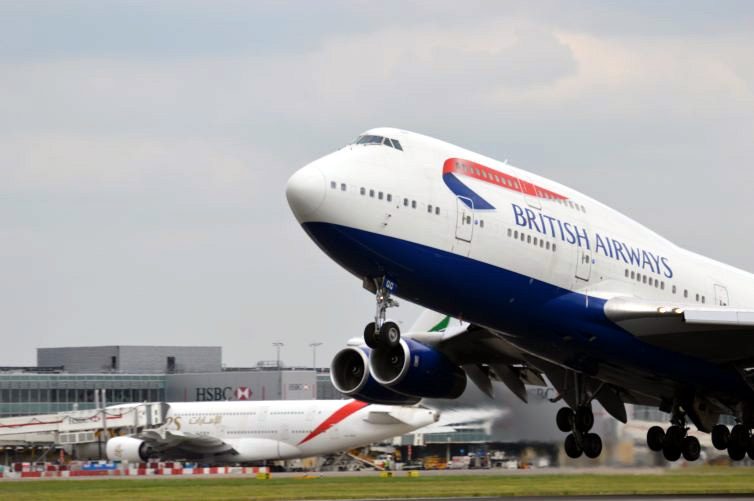
From Heathrow With Love – Photo: Alastair Long | AirlineReporter
Last month, I attended an ultimate behind-the-scenes airport tour, courtesy of London’s Heathrow Airport (LHR). LHR’s Digital Communications Manager, Chris Loy, welcomed a select group of aviation publications to showcase its daily operations and on behalf of AirlineReporter I was thrilled to be a part of it.
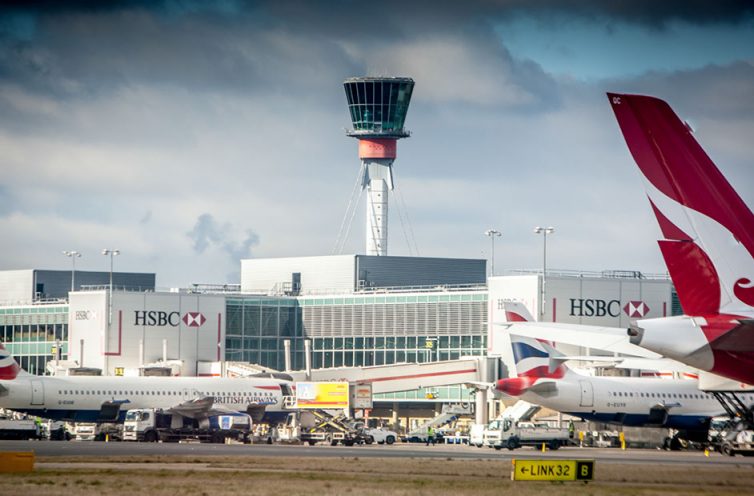
Control Tower – Photo: LHR Airports Limited
I always enjoy traveling through LHR, especially Terminal 5 (T5), and revel in what is generally a calm and serene travel experience. This is despite handling more than 75 million passengers and about 1.5 million tons of cargo (the non self-loading variety) per year.
I compare this to the utter chaos that is London’s Luton Airport (LTN) while they undergo extensive construction, or the holiday-maker maelstrom that is Gatwick Airport (LGW) during the summer. That said, I have never transited through LHR. Nor have I ever suffered from any extensive flight delays at the airport.
“Yes, transiting is an operational challenge at Heathrow,” remarks LHR Filming Coordinator and Airside Safety Officer, Joe Audcent. “The airfield is just so big from one end to another.” Chris and Joe would be our intrepid tour guides and I was looking forward to learning more about my hometown airport.
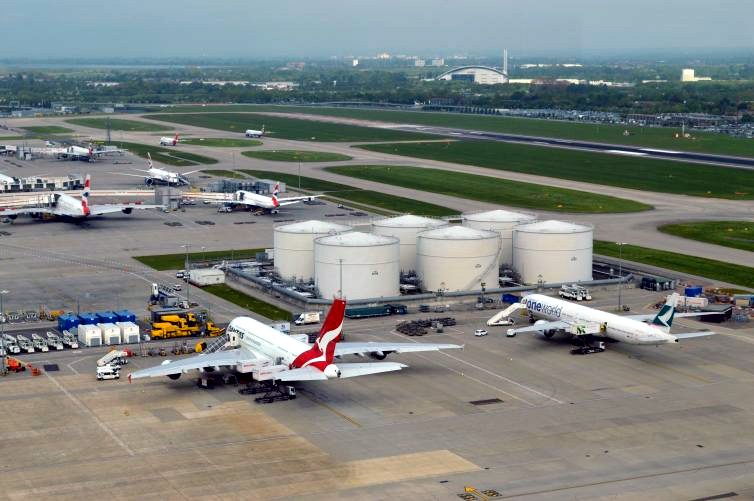
View from ATC – Photo: Alastair Long | AirlineReporter
We certainly got the impression of vastness, having ascended 285 feet up the highest air traffic control tower in the UK. It was impressive staring out at the airport’s maze-like strips of grass and concrete encircled by the greater London suburbs in the background and Windsor Castle in the distance. The tiny lift to the summit reminded me of a cross between the Eiffel Tower lifts and Captain Nemo’s Nautilus.
Speaking of suburbia, many of you will know that the UK is currently engulfed in a fierce debate about increasing airport capacity; LHR is at 98% capacity. It is an emotive issue, dividing public opinion quite sharply and has dogged government policy on runway expansion for many years.
I won’t debate the rights and wrongs. However, I personally say build two more runways at Heathrow and one at Gatwick please. I suppose I nailed my colors to more than one mast there – I’m not sure it works, but you catch my drift.
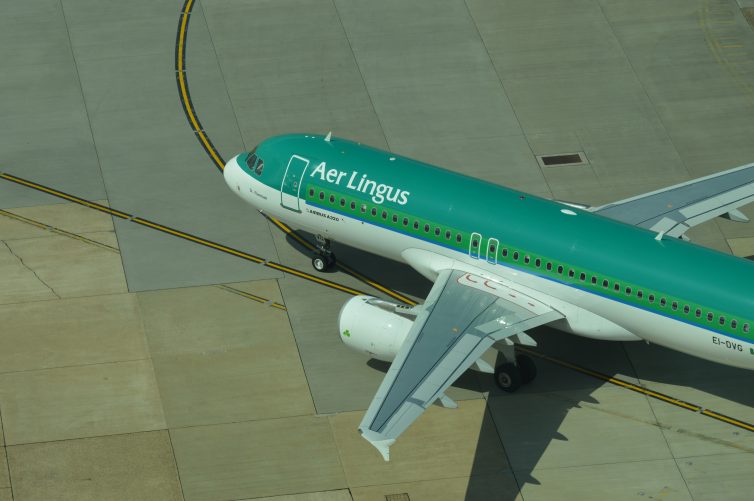
Hmm… which line do we follow? Photo: Alastair Long | AirlineReporter
The airport celebrated its 70th anniversary on May 31st 2016 and in that time, it has gone from six runways in an approximate “Star of David” formation, to three runways up to the 1980s, and now the two incumbent 09 and 27 runways.
- LHR with six (Heathrow Airport Limited wall photo)- Photo: Alastair Long | AirlineReporter
- London Airport (later to be re-named Heathrow), the first official flight to depart from the airport, British South American Airways Avro Lancastrian aircraft, Star Light, 1946 – photo: LHR Airports Limited
- A piece of old of the old six runways blends into airfield surface – Photo: Alastair Long | AirllineReporter
My quick snap of the pictorial timeline in LHR’s airside ops building is crude, but it gives you a good idea of what launching points the hub used to have. Of course, the runways intersected each other and could never have sustained the sort of modern traffic types and volumes that the airport welcomes today. As Joe explained, operating the original third runway was only possible with a decent southerly wind and without operating the other two runways at the same time.
- Virgin Atlantic Dreamliner “Dream Girl” at the front of the taxi queue for departure
- American’s turn (an AA 777 positions)
- Special Singapore Airlines livery
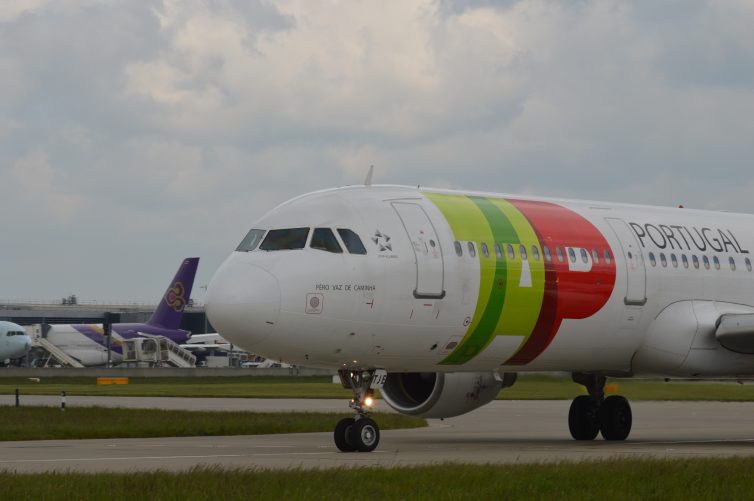
TAP Portugal give us a wave – Photo: Alastair Long | AirlineReporter
From a prime position just in front of a taxiway to the runway edge, we were given ample time to stand, sit, watch and photograph all of the colorful liveries take to the London skies. Think child in a sweet shop and you get close to the level of awe and excitement that I felt. I have never been up so close and personal to these winged beasts in motion while not actually being on board. We even got a wave from TAP’s flight deck to boot! Easily pleased I am.
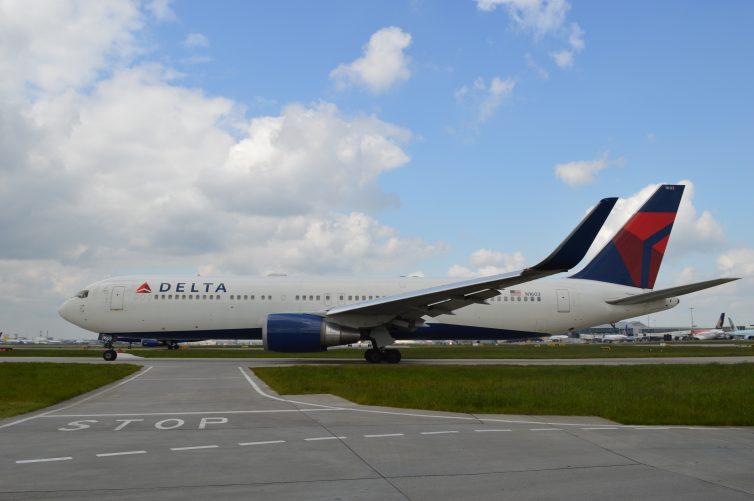
Delta 767 – Photo: Alastair Long | AirlineReporter
This was an aviation safari. In fact, Mr Bridges, was so adept at doing circuits around the airfield, racing alongside little and large aircraft as they jostled for position, that it reminded me of the film Jurassic Park when Sam Neill and those two pesky kids run amongst a herd of dinosaurs, trying to avoid getting eaten by the T-Rex. We didn’t get eaten of course, instead we ate a delicious lunch airside at Terminal 2 (the “Queen’s Terminal”).
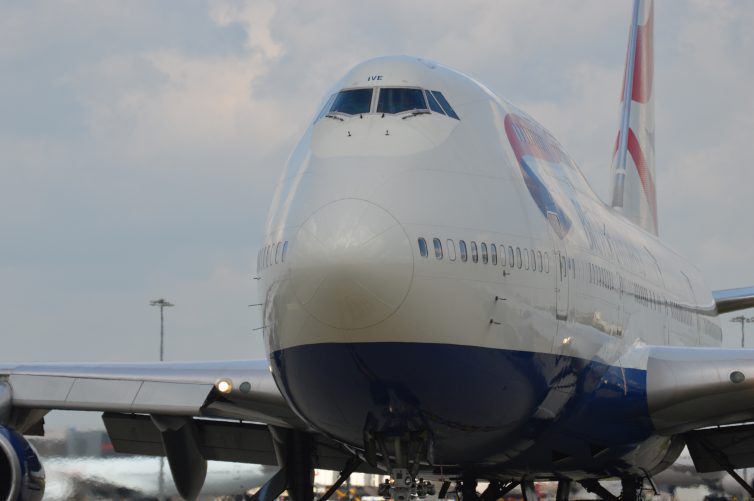
Another Queen of the Skies for you – Photo: Alastair Long | AirlineReporter
We were all surprised about how many 747s were milling about, almost like bison grazing. They’re beautiful aircraft, but they don’t give off a roar when advancing. Let’s perhaps change the analogy to lions. Ironically enough, some of the smaller aircraft were noisier than some of the big birds. The Dreamliner moved like a silent predator though, with its distinctive noise-reducing “crinkle-cut” engine nacelles.
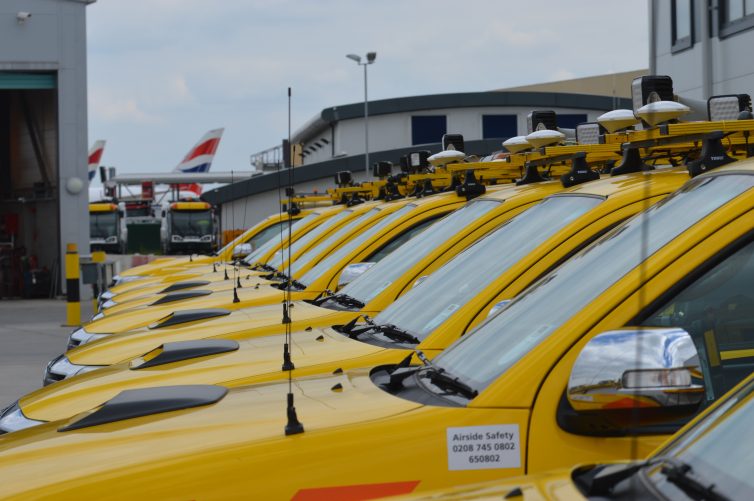
LHR safety cars at the ready – Photo: Alastair Long | AirlineReporter
The LHR Airside Operations building, including its roof top, was our next stop. We were privy to observing the control room, where a mere scrap of paper on the runway is likely to set off a flashing red FOD (Foreign Object Debris) alarm on the monitor. Again, I was impressed at the calm atmosphere in the building. Yes, had there been an emergency to manage then things might have looked slightly different.
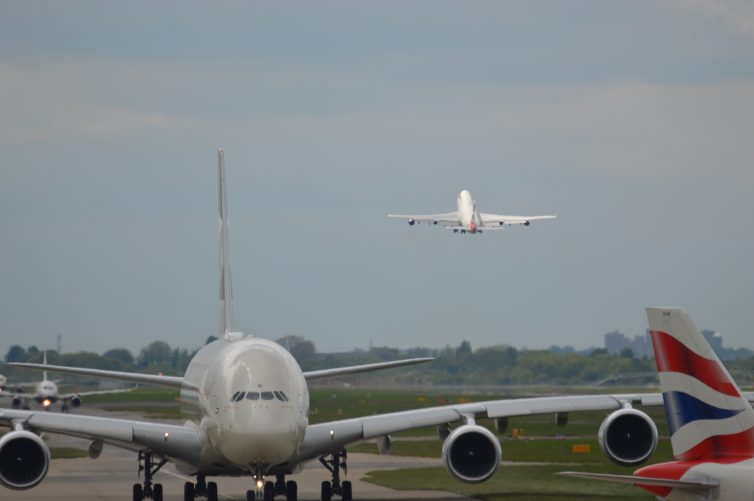
Etihad A380 and another BA 747 getting airborne – Photo: Alastair Long | AirlineReporter
The sheer volume of traffic movements belies any calmness. Joe recounted a story of how an inbound aircraft inadvertently put a number of aircraft into the holding pattern because, upon landing, the pilots got hopelessly lost looking for their exit and effectively blocked the runway. Out came one of those distinctive yellow safety cars to guide these guys home.
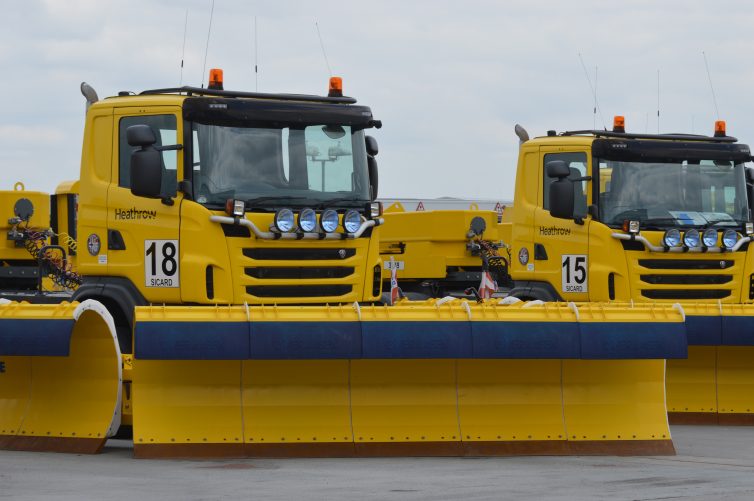
That’s not to say that LHR operations have always been smooth. The airport got absolutely slaughtered by the national press in December 2010 when heavier than expected snowfall caused chaos. In the wake of the storm, airport management were accused of chronic underinvestment. For example, the airport at the time lacked heavy-duty runway snowplows. They do not lack them anymore!
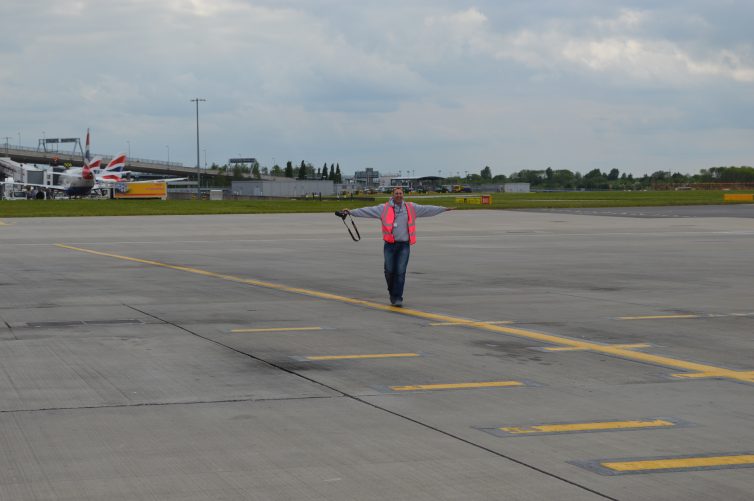
Walk the line – Photo: Alastair Long | AirlineReporter
Speaking of cool gadgets, we then live-tested the parking stand apparatus (well, one of our party did). With arms out-stretched and walking carefully along the yellow parking line like a driver demonstrating to traffic cops that he’s sober, Gary Claridge-King from Airliners.net followed the computerized arrows on screen to ensure an accurate and safe arrival.
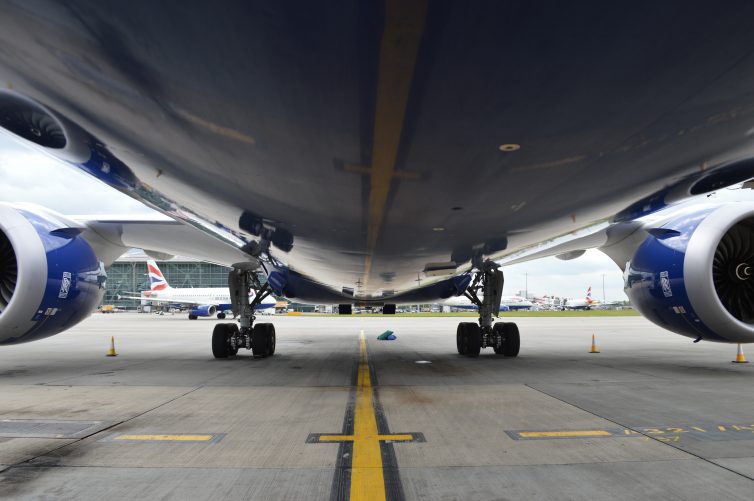
Touching the belly of a BA787 – Photo: Alastair Long | AirlineReporter
As if the airport tour was not exciting enough, we had also been invited to explore the outside and then the inside of an empty British Airways Dreamliner. There to welcome us abroad the aircraft was BA’s Turnaround Manager, Declan Casbon, and Corporate PR Executive, Anya Fisher. Standing underneath the composite beast, we could not resist tapping against the airframe to listen for differing sound resonance.
- BA Club World on the 787 – photo: Alastair Long | AirlineReporter
- 787 crew rest area – photo: Alastair Long | AirlineReporter
The onboard tour included a sit down in the flight deck and a peek at the fore and aft crew rest areas. However, I spent most of my time in a front row seat up in first class. It had been an early start and I could feel myself literally starting to doze when Chris came along to continue the tour. I thought he might have had to pry me off the seat. Or call the British Transport Police to do it.
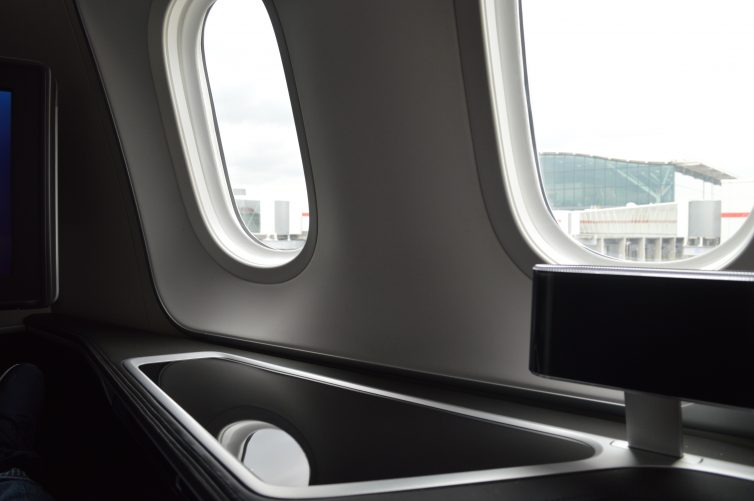
Time for an afternoon nap in First Class – Photo: Alastair Long | AirlineReporter
The day nearly complete, it was time for a round-up over a few beers at the “Flying Chariot” in the Queen’s Terminal. A new television series, “Heathrow: Britain’s Busiest Airport” premiered on May 30th on the UK television channel ITV, and new episodes are airing on Mondays. Chris, Joe and many others at LHR have been working hard on this project. This series also provides a chance for a lucky viewer to win an airside tour, similar to this one, through the #votemeairside competition.
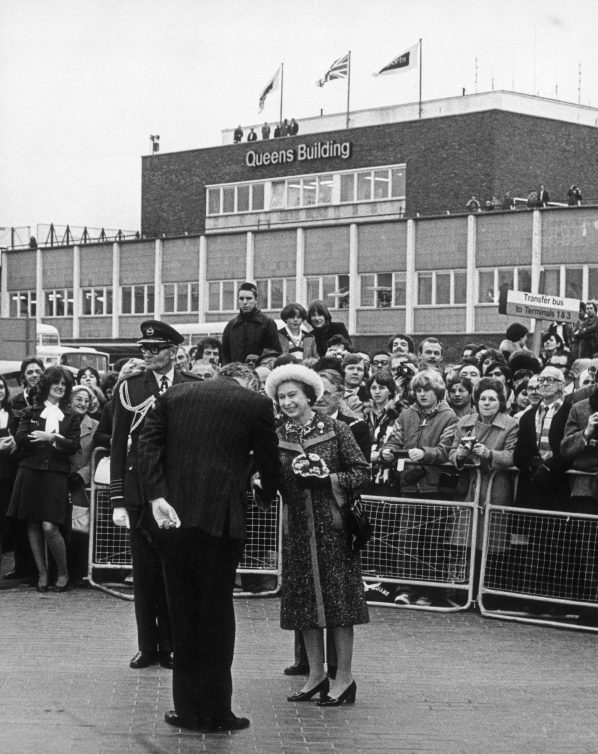
Heathrow Airport, Her Majesty The Queen visits the airport, 1970s – Photo: LHR Airports Limited
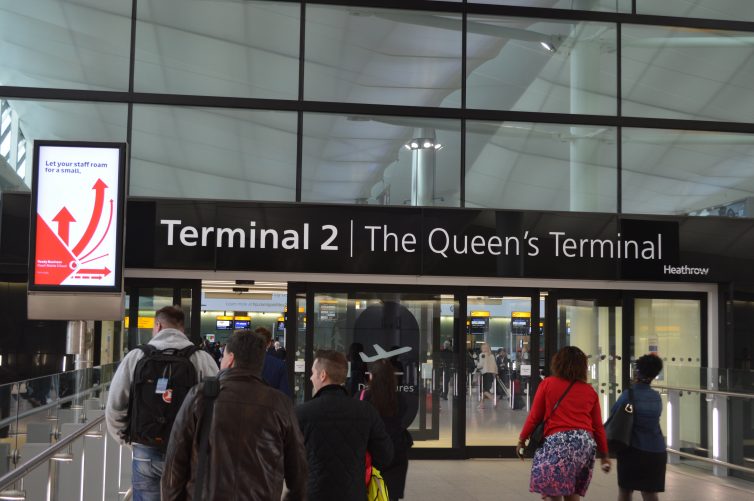
Off to the Navigator – photo: Alastair Long | AirlineReporter
I have to say that this was my favorite AvGeek experience. The small group, the ability to take close-up photos, or simply to listen to highly professional individuals talk passionately about something that is more than just a job made it more personal. The day at LHR was the Holy Grail of aviation experiences and I am glad that I could share!
Comments are closed here.
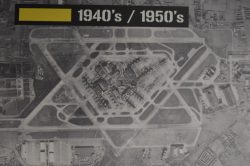
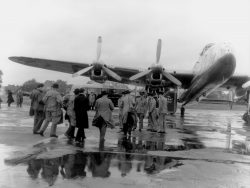
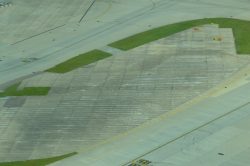
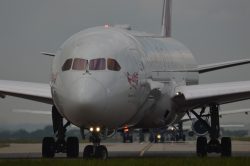
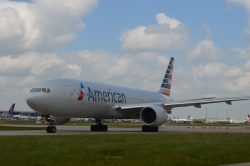
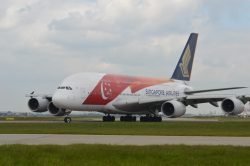
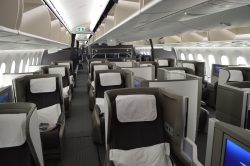
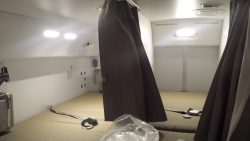
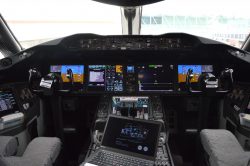
I can understand why LHR might be happy to see gratuitous insults directed at LGW as they plot to further ruin the lives of millions of Londoners. As a mere passenger, I do not recognise that LGW is a maelstrom indeed prefer the experience to LHR. Ideally we should close down LHR which is one of the most polluted, congested, passenger-unfriendly airports on earth. We managed to build a decent airport in Hong Kong but the challenge seems to overwhelm us at home.
Fair comment, although my experience of both LGW and LTN is my own as a passenger. I’ve used both of them extensively over the last two years, which admittedly has coloured my view somewhat. Out of interest, where would you build or expand in the UK, if LHR was closed? Hong Kong Airport is off the main island. Speaking of which, what did you think of the Boris Island idea?
I first flew into Heathrow in 1960. It was terrible then and is now worse. Expanding it will make it much worse. The Thames estuary is the only sensible place. It is the only location to build a future-proof airport and would allow the only possible semsible sokution for Heathrow, which is to raze it to the ground.
@lefoudubaron
Hard to see airport expansion shifting eastwards to a super-hub on the Thames Estuary, although I heard Daniel Moylan speak passionately about it a few years ago. He made a compelling case, but the Davies Commission vetoed it. There’ll probably be a runway on Mars before a decision is ever taken about UK capacity. Remember Cublington?
Sadly, Davies had only one brief which was to expand Heathrow.
@lefoudubaron
Great article, I hope to fly into Heathrow someday. I just amazes me how so much air traffic moves using two runways. Thanks for sharing!
Thanks Bruce. Glad you enjoyed it! Lifting the bonnet to see the operation in action was remarkable.
FYI, Alastair and other Planeiacs, there’s a NEW ( published in 2016 ) pictorial book about LHR. It’s EXCELLENT – with aboundant historical and current images. It has at LEAST 125 pages ). I bought my copy just yesterday; at AJ Publications ( formerly known as The Aviation Hobby Shop or TAHS ). ( It’s but a short bus ride from LHR; via Bath Road, on the 222 bus ). I don’t have the full details at the moment; as they’re upstairs in my hotel room. However, if you do a Search for AJ Publications ( or close to this ) you can then find details of this book on their web site.
Alternately, you can ask me a question ab out it, via this fórum.
Furthermore, ITV televisión here in Britain had a series of programs dedicated to LHR. The final episode aired just this past Monday night. The staff at “TAHS ” … told me yesterday that it was a NEW series. Maybe it can be found on YouTube???
Thanks Joe. I’ll check that out.
Yes, this tour was a precursor to the second series of Heathrow: Britain’s Busiest Airport on the UK TV channel ITV. The episodes may well be on YouTube. The first series of it was also quite good. Fly-on-the-wall documentaries about airlines and airports are still very popular here. The original Airline series about easyJet in the very late 1990’s is often re-run on non-mainstream channels. I also recommend watching the BBC’s comedy Come Fly With Me. It’s silly, but pokes fun at various parts of the aviation industry. If you’ve worked in the industry, travel a lot or are an Avgeek you can’t help but recognise some of the traits!
Alastair, the new Heathrow book has 169 pages; with mainly colour photos. It’s a pictorial celebrating and commemorating Heathrow’s 70th anniversary. Its quality is EXCELLENT!
Upon your request, I can provide you with details regarding the Publisher. However, I think you’ll find them on TAHS’ web site.
Btw, I bought TAHS’ third – of their three stocked – copies. So, you may do better ordering from the publishing company.
I just came across this site, and I think its very interesting. While do not travel much, I’ve always had an interest in this kind of thing.
Great write-up. Did you get any images from inside the airside operations building, by chance?
An exciting journey, but I mean the aviation security will not like this.
Loved this article! Brought back many happy memories! Loved all the pictures, but my favorite was of my absolute favorite airline, Aer Lingus! Cute caption, “Which line do we follow?” Thank you, as always.
Maureen I would love to fly into Heathrow someday. A planespotters paradise !!! Take care